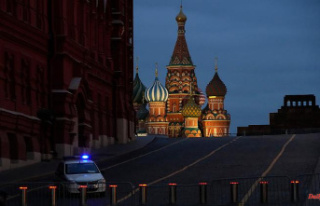It's been a long time since Ford customers were allowed to count themselves in the upper class. But when the Granada, the new flagship, came from Cologne 50 years ago, it was Mercedes
In less than four hours with the Concorde to New York and on vacation to the southern tip of Spain: The world became smaller in the 1970s. And the auto industry made its contribution. At the Geneva Motor Show in spring 1972, Ford spoke of "revolutionary changes that had taken place in travel in Europe in recent years".
"A trip that used to be a week-long adventure for the intrepid is suddenly an unproblematic two-day trip," the managers stated. Conveniently, the right car was unveiled, which should make such trips possible: the stage was set and the curtain raised for the new Granada.
The model was developed at the time with a huge budget of 500 million German marks in double with the Ford Consul. This was technically identical, but positioned a little less prestigious - and in the end rather unsuccessful. The Granada replaced the 17 M, 20 M and 26 M families 50 years ago.
The Ford Granada wanted to appeal to all those drivers "who regularly travel long distances on vacation and business trips" and therefore demand cars "that are comfortable, not tiring, well equipped and in which one can easily cover 1000 kilometers in a day". said Ford's PR at the time.
Ford had implemented this claim so thoroughly that the Granada was not compared with Opel and Co in driving reports after the premiere, but with Mercedes and BMW. And at least when it came to noise comfort, Ford had compared itself to Rolls-Royce without false modesty.
But what really made the Granada a climber were its six-cylinder engines. The Ford flagship was also available with a sober four-wheeler and the model range started with 1.7 liters and 65 hp. "But who says Granada, actually means the 3.0 with its 150 hp V6," says Frank Wilke from the market observer Classic Analytics. "With up to 184 km/h, it has completely catapulted the Granada into another league."
Except for the price, of course. Because it started at 11,995 German marks. That put it between 25 and 50 percent below the posh competition, making the big Ford the sensible choice. "Anyone who drives a Granada has achieved something in life. It also proves that the relation between the purchase price and the equivalent value was worth considering," the testers wrote in his register at the time.
Apparently this worked out: in the first year Ford sold over 100,000 Consul and Granada. By the time the generation changed five years later, there were over 700,000 copies. And when the Scorpio took its place in 1985, more than 1.6 million deliveries were on the books, says Ford spokesman Hartwig Petersen.
Much of the noblesse of that time can still be felt today: the format is stately, but the shapes are less baroque than those of the American parent company: the Granada, which is almost 4.60 meters long, welcomes you with an inner size that luxury limousines at best still offer today. There are buttery soft seats, but they show enough leadership. A decorative ambience of corduroy and imitation leather characterizes the interior.
Nothing and nobody can upset the chassis - even if the asphalt is the same age as the test car. And because the six-cylinder had to be kept in check somehow, the brakes are dimensioned accordingly and justify the trust that this Ford conveys to this day.
However, the Granada was not only offered as a sedan and sleek fastback coupé, but also as a station wagon. In this way, it brought a little excess of cargo space long before Mercedes, BMW and Audi. "Because with its huge amount of space and the then unrivaled six-cylinder in station wagons, the Granada tournament was the first luxurious lifestyle truck," says Wilke, stamping him as a pioneer of all the powerful practitioners from southern Germany, who for a long time were the favorite cars of sales representatives counted.
The Granada also drew on this generous amount of space during its second career as a used car. It was initially the first choice for everyone who was looking for plenty of space for family, luggage and goods to be transported, and who found it in the large Ford. Later, in the second life, the Cologne Croesus also offered itself as a cool cart for everyone who didn't see it so closely with conventions. So he showed himself as a winter car for Harley drivers and gave it the star again with students.
Film and television have also recognized Granada's cult potential. In the early 1980s he was seen in the very popular ARD evening series "Der Fahnder". And even the hitherto most unconventional "crime scene" commissioner Horst Schimanski hunted through Duisburg in the large Cologne before he sat on a Citroën CX. In the cinema comedy "Der Schnüffler" Dieter Hallervorden also drove up in the Granada. It was also seen in the British television series "The Professionals" alongside other models such as the Capri.
First the unusual positioning as a new car, then the used favorite among those hungry for space and the cult status - today Wilke counts the Granada as one of the most popular vintage cars from Cologne by far.
"Apart from Capri and Escort, there's not much more to it," he says. And despite that fame, he remains true to his reputation when it comes to price. Even as a classic, it's a luxury that you can afford, says Wilke: "Even a V6 model from the early years can still be had in good condition for around 10,000 euros."












